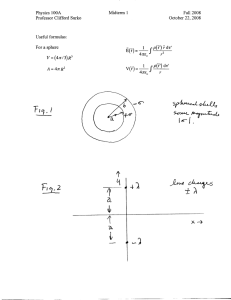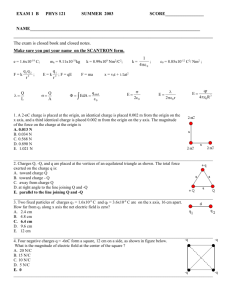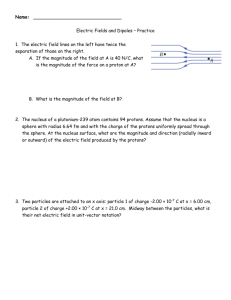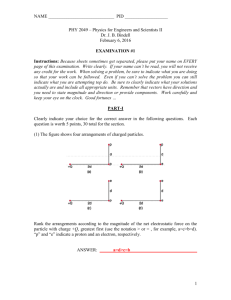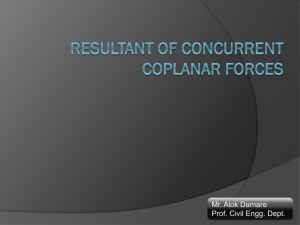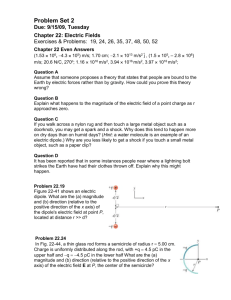Extra help Midterm1
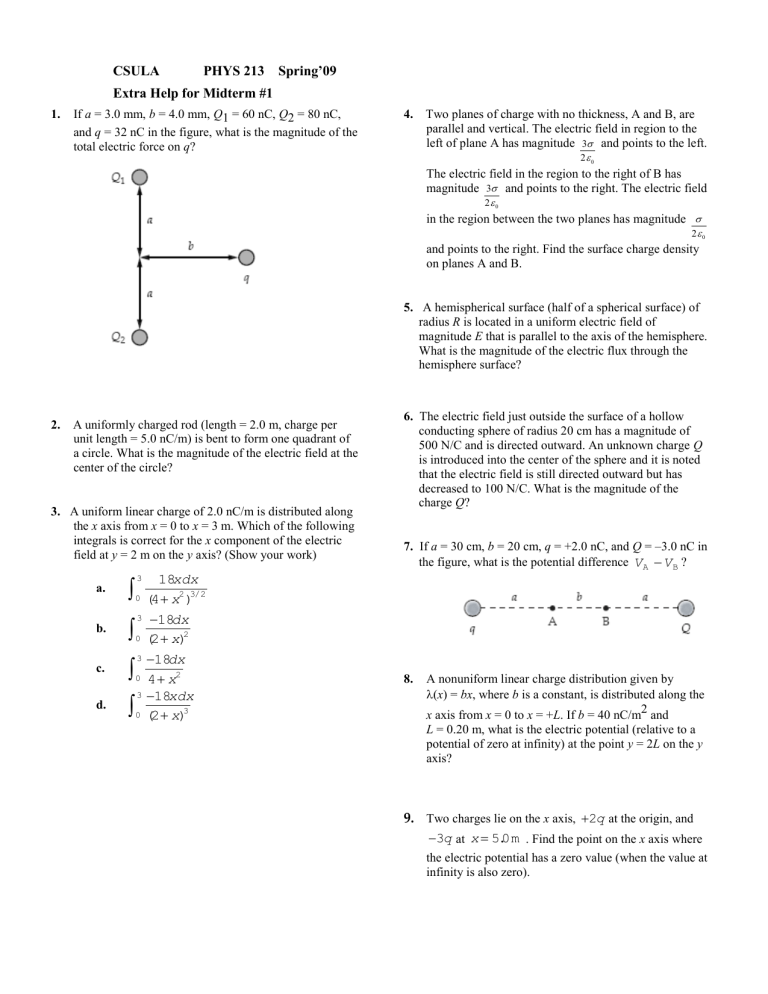
CSULA PHYS 213 Spring’09
Extra Help for Midterm #1
1.
If a = 3.0 mm, b = 4.0 mm, Q
1 = 60 nC,
Q
2 = 80 nC, and q = 32 nC in the figure, what is the magnitude of the total electric force on q ?
2.
A uniformly charged rod (length = 2.0 m, charge per unit length = 5.0 nC/m) is bent to form one quadrant of a circle. What is the magnitude of the electric field at the center of the circle?
3.
A uniform linear charge of 2.0 nC/m is distributed along the x axis from x = 0 to x = 3 m. Which of the following integrals is correct for the x component of the electric field at y = 2 m on the y axis? (Show your work) a.
b.
c.
d.
0
3
3
0
3
0
3
0
( 4
18 xdx
x
2
)
3 / 2
(
18 dx
2 x )
2
18 dx
4
x
2
18 xdx
( 2 x ) 3
4. Two planes of charge with no thickness, A and B, are parallel and vertical. The electric field in region to the left of plane A has magnitude 3
2
0
and points to the left.
The electric field in the region to the right of B has magnitude 3
2
0
and points to the right. The electric field in the region between the two planes has magnitude
2
0 and points to the right. Find the surface charge density on planes A and B.
5.
A hemispherical surface (half of a spherical surface) of radius R is located in a uniform electric field of magnitude E that is parallel to the axis of the hemisphere.
What is the magnitude of the electric flux through the hemisphere surface?
6. The electric field just outside the surface of a hollow conducting sphere of radius 20 cm has a magnitude of
500 N/C and is directed outward. An unknown charge Q is introduced into the center of the sphere and it is noted that the electric field is still directed outward but has decreased to 100 N/C. What is the magnitude of the charge Q ?
7.
If a = 30 cm, b = 20 cm, q = +2.0 nC, and Q = –3.0 nC in the figure, what is the potential difference V
A
V
B
?
8.
A nonuniform linear charge distribution given by
( x ) = bx , where b is a constant, is distributed along the x axis from x = 0 to x = + L . If b = 40 nC/m
2
and
L = 0.20 m, what is the electric potential (relative to a potential of zero at infinity) at the point y = 2 L on the y axis?
9.
Two charges lie on the x axis,
2 q
at the origin, and
3 q
at x 5 .
m
. Find the point on the x axis where the electric potential has a zero value (when the value at infinity is also zero).
